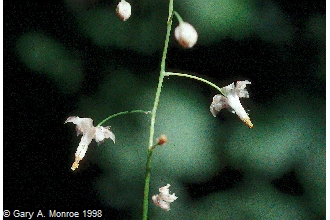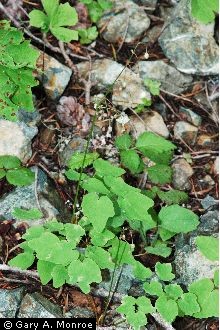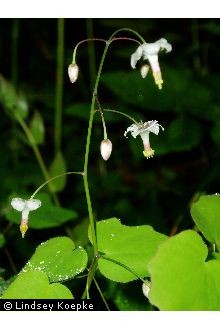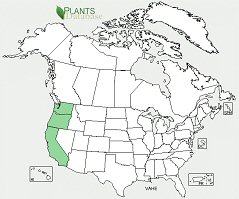Perennial, deciduous to nearly evergreen, low growing, spreading, 10-20 inches ( 25-50 cm) tall; young stems wiry. Leaves mostly arise near the ground, 8-25 cm long, compound, 2-3 leaflets, each somewhat heat-shaped at the base and commonly called duck foot-shaped, lobed, margin entire, green, lower surface sparsely hairy; petiole becoming straw-colored. Flowers small, in upright clusters of 25-30, 6 white petals, 4-6 mm, strongly reflexed.
Leaves falling when fruits maturing, 2-3-ternately compound, 8-30 cm; petiole 3-25 cm, pilose at base. Leaflet blades narrowly to broadly ovate to rhomboid or rounded pentagonal, often 3-lobed, base cordate, margins entire to slightly sinuate and not conspicuously thickened, apex rounded to notched; surfaces abaxially sparsely hairy, adaxially glabrous. Inflorescences: peduncle 2-3 dm; pedicel 1-3 cm, glands absent. Flowers 5-30; bracteoles 6-9, white, yellowish when dried, dotted with glandular trichomes; sepals 6, white, 5-12 mm; petals 6, white, yellowish when dried, 4-6 mm, margins entire, petal apex strongly reflexed, with nectar-bearing pocket, nectaries golden; filaments stipitate-glandular. Follicles greenish to light brown, 10-15 mm including beak, beak 2-3 mm, stipitate-glandular. Seeds 1-6, black, lunate to reniform, 3 mm. 2 n = 12.



